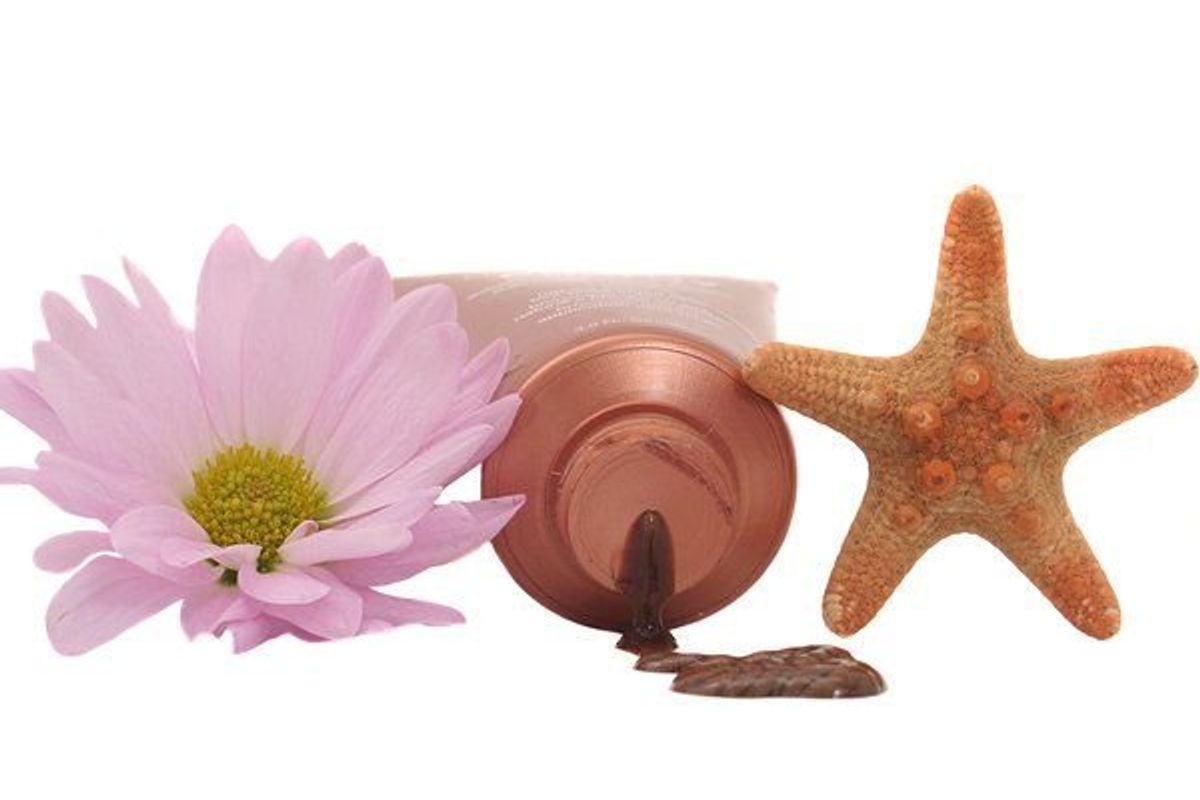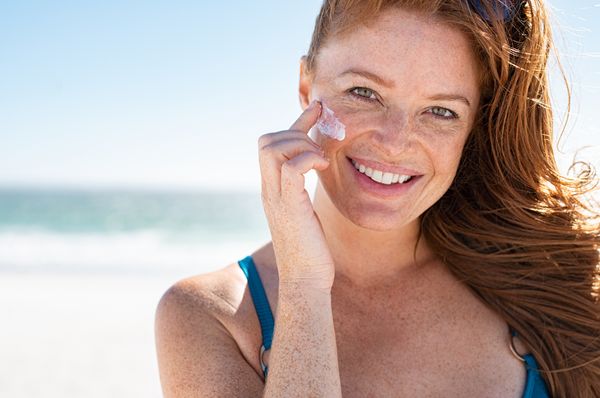Skin Fact: "Whether you're at the beach or in your own backyard, keep in mind that about 90 percent of nonmelanoma skin cancers and about 86 percent of melanomas can be attributed to exposure to ultraviolet (UV) radiation." —Skin Cancer Foundation
I can't help but think my skin looks better when it's tan. It works wonders for covering up the uneven sun spots and veins that have taken up residence on my legs. But for my fair, freckled complexion, tanning by natural means is impossible—and a danger.
That's why I was so happy when self-tanners came on the market.
But when they first appeared, the results were less than pretty. The odor: putrid. The color: anything-but-natural—an orange-y, fake hue (complete with streaks) that looked like I'd smeared melted Cheetos all over my body.
Thank goodness so many chemists jumped on the bandwagon, realizing that this was something with promise and something that could save lives. (OK, maybe I'm being dramatic here, but when you consider that every 52 minutes someone dies of melanoma, any alternative to tanning is a win-win, no?)
What You Need to Know
Self-tanners (aka sunless tanning products) come in lotions, creams and sprays. Or, you can have a professional apply a spray-on tan. (I tried that recently and loved the results!)
Dihydroxyacetone (DHA) is a color additive that, when it comes in contact with dead skin cells on your skin's surface, temporarily darkens the skin. Voila! You have a tan—albeit a temporary one, wearing off after a few days.
Are they safe? DHA has been approved by the FDA for this specific use. The FDA does caution that DHA should not be inhaled or applied to areas like the lips or nose or around the eyes (any area that is covered by mucous membranes).
Be careful not to let your eyes fool you and tell you that you already have a "base" tan and therefore can't burn. You still need sunscreen outdoors, as always. And remember that most self-tanners don't contain sunscreen. If they do, the protection will only last for a few hours.
If You're Tempted Just to Swallow a Pill
Don't do it. The pills typically contain a chemical called canthaxanthin, a color additive, which not only turns your skin orange or brown but can also cause hives, liver damage and even vision problems.
How to Create the Best Fake Tan Ever
Here's what the
American Academy of Dermatology advises:
- Exfoliate. Use a washcloth to exfoliate the skin before applying a self-tanner. Using an exfoliating product also will help remove dead skin cells. Spend a little more time exfoliating where your skin is thickest—elbows, knees and ankles.
- Dry your skin. Drying before you apply a self-tanner helps it go on evenly.
- Apply in sections. Apply the self-tanner in sections (such as the arms, then legs, followed by the torso). Massage the self-tanner into your skin in a circular motion.
- Wash your hands after each section. You will avoid orange-colored palms by washing your hands with soap and water after you apply the self-tanner to each section of your body.
- Blend at your wrists and ankles. For a natural look, you need to lightly extend the tanner from your wrists to your hands and from your ankles to your feet.
- Dilute over your joints. Dilute the self-tanner on the knees, ankles and elbows, because these areas tend to absorb more self-tanner than the rest of the skin. To dilute, lightly rub with a damp towel or apply a thin layer of lotion on top of the self-tanner.
- Give your skin time to dry. Wait at least 10 minutes before getting dressed. For the next three hours, it is best to wear loose clothing and try to avoid sweating.
If You're Going to Get a Spray-On Tan, Know This
Make sure to ask about protecting your eyes, lips, nose and ears. And another good question: "How will I be protected from inhaling the spray?" (Some options include nose plugs, lip balm, a nose filter and goggles. Throw away your pride for a moment, in the interest of your health, OK?)
And Lastly, How to Make It Last
Keep your skin well-moisturized. Before you step into a bath or shower, apply a body oil, which can create a barrier on your skin.
After showering or bathing, lightly towel off (resist the urge to rub—that will take some color off!) and moisturize again. I love this product from Jergens, which not only moisturizes, but combines hydration with a little self-tanner, so you can gradually build up and maintain your color.
What to Say When Someone Says, "You Look So Good!"
"I'll gladly share my healthy secret with you. Let's sit and chat outside—in the shade, preferably."
My Wish List of Self-Tanners
St. Tropez Mousse is a super-lightweight, easy-to-apply, tinted mousse that dries in 60 seconds.
Another by St. Tropez lets you tan in the shower and rinse off after 3 minutes.
This post originally appeared on mysocalledmidlife.net.







